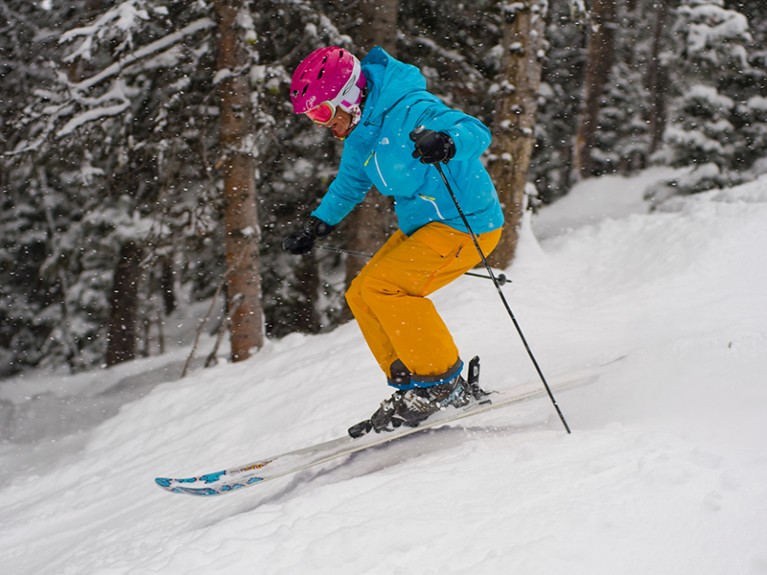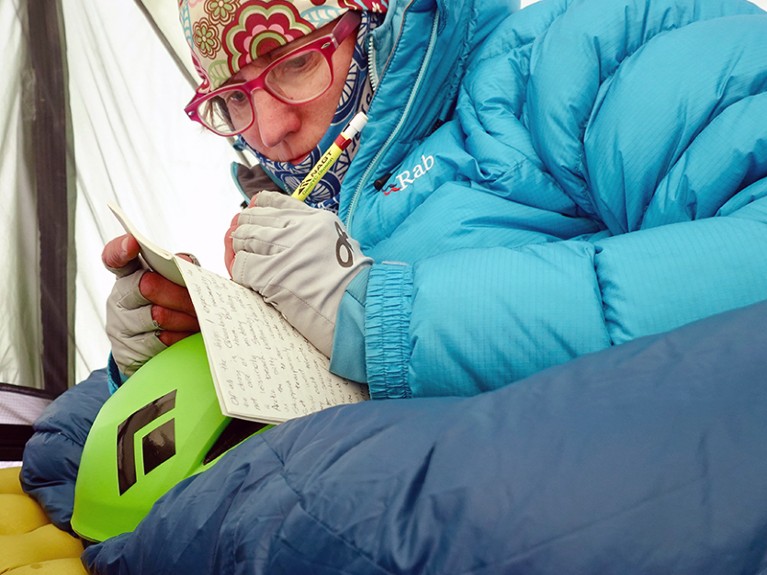[ad_1]
Therese Johaug superó la ventaja de 1-2 de Noruega en el Tour de Ski con una victoria dominante en la última etapa de escalada el domingo, frustrando el intento de la estadounidense Jessie Diggins de ganar el evento por segundo año consecutivo y tercera vez en general.
La noruega Astrid Auer Slinde finalizó segunda, a 47 segundos de Johag, durante la prueba de siete etapas. Diggins terminó tercero en la general, a 2 minutos y 41 segundos del líder.
El evento de una semana, que forma parte de la temporada de la Copa del Mundo, es el más agotador del esquí de fondo, con siete etapas a lo largo de nueve días y más de 80 kilómetros de carrera, poniendo a prueba tanto el método clásico (en el que los esquiadores se mueven en línea recta) -movimiento en línea) en pistas en la nieve) y estilo libre (en el que los esquiadores se empujan hacia los lados, como esquiar), así como distancias de sprint y resistencia.
La etapa final del domingo fue una subida libre de 10 kilómetros en una pista de esquí alpino con una pendiente promedio del 12 por ciento en Val di Fiemme, Italia, que será la sede del esquí de fondo en los Juegos Olímpicos Milán-Cortina 2026. Diggins comenzó el día en tercer lugar. posición general A un minuto y 47 segundos del líder.
Diggins, de 33 años, lideró después de cada una de las tres primeras etapas y ganó las dos primeras, incluida su primera victoria en el estilo Clásico, y aseguró una ventaja temprana para defender su título de 2023 a 2024. Pero GoHugh y Slinde, ambos de 36 años, dominó las subidas intermedias para adelantar al estadounidense y luego terminó 1-2 en la subida final para asegurar su lugar en lo más alto del podio.
Johaug completó la etapa del domingo en un tiempo de 35:59 segundos, 25,5 segundos por detrás de Slind. Diggins terminó sexto en la etapa final, 54,3 segundos detrás de Johaug.
Fue la cuarta victoria de Johaug en el Tour de Ski y un récord. Se une a la polaca Justyna Kowalczyk, al suizo Dario Colonia y a su compatriota noruego Johannes Hosflot Klebo, que ganó el título masculino más temprano el domingo, como cuatro veces ganadores del evento de 19 años.
Claybo (28 años), corredor veloz, logró su cuarto título al terminar la carrera 1:23 por delante del austriaco Mika Vermeulen en la clasificación general, sumándose a una condecorada estantería que incluye cinco oros olímpicos y nueve oros mundiales.
Yohaug no ha competido en el Tour de Ski desde que consiguió su tercer título en 2020. Se retiró de la competición de élite después de la temporada 2021-22, pero regresó este año y logró cuatro victorias y ocho podios esta temporada, y ahora ocupa el segundo lugar en la general. Clasificación de la Copa del Mundo. .
“No era mi objetivo, no lo es, porque no debería estar aquí, pero (cosas) suceden y estoy muy feliz de haber decidido estar en el Tour”, dijo Gogh después de la carrera.
Con la estrella del esquí alpino estadounidense Lindsey Vonn presente para animarla, Diggins se desplomó en la línea de meta después de conseguir su cuarto podio en el Tour de Ski. en Entrevista con el atleta mes pasadoDiggins describió la sensación de terminar una de las pruebas de resistencia más exigentes de todos los deportes.
“Cuando terminas, sientes una satisfacción tremenda y también te sientes como si estuvieras borracho, pero sin ninguna de las partes divertidas de estar borracho. Simplemente te sientes cansado, un poco mareado y un poco fuera de sí, como yo. Estoy flotando en mi cuerpo, como flotando por la vida…
“Así es como me siento al final de la gira, como si necesitara dormir unas 17 horas y sé que estoy a punto de tener la peor noche de sueño de mi vida porque a mi cuerpo le va a costar trabajo cerrarse. abajo al final de todo.
Las 10 mujeres diferentes que han ganado el Tour de Ski al menos una vez desde su creación en 2006-07 han conseguido 49 medallas olímpicas, incluidas 21 de oro. Los 11 campeones masculinos ganaron 39 medallas olímpicas, incluidas 18 de oro.
El Tour de Ski tiene una influencia significativa en la clasificación general de la Copa del Mundo debido al gran número de puntos que se acumulan en las diferentes etapas y por las llegadas en la clasificación general. Con su tercer puesto, Diggins mantuvo su liderazgo general allí. Ha terminado primera o segunda en la clasificación de la temporada completa en los últimos cuatro años, con victorias en 2021 y 2024.
En 2018, Diggins y Kikkan Randall se convirtieron en los primeros estadounidenses en ganar una medalla de oro olímpica en cross country cuando ganaron el sprint por equipos femenino en Pyeongchang, Corea del Sur. Diggins sumó medallas individuales de plata y bronce en Beijing en 2022, lo que le permitió ganar tres de las cuatro medallas olímpicas que los estadounidenses han ganado en un deporte gobernado por Escandinavia y Rusia. El estadounidense Bill Koch también ganó la medalla de plata en la carrera de 30 km en Innsbruck en 1976.

ir más profundo
Jessie Diggins habla sobre la prueba más dura del esquí de fondo: la carrera de esquí
(Foto de Jesse Diggins tras completar la penúltima etapa el sábado: Grega Valancic/VOIGT/Getty Images)
[ad_2]
Source Article Link




